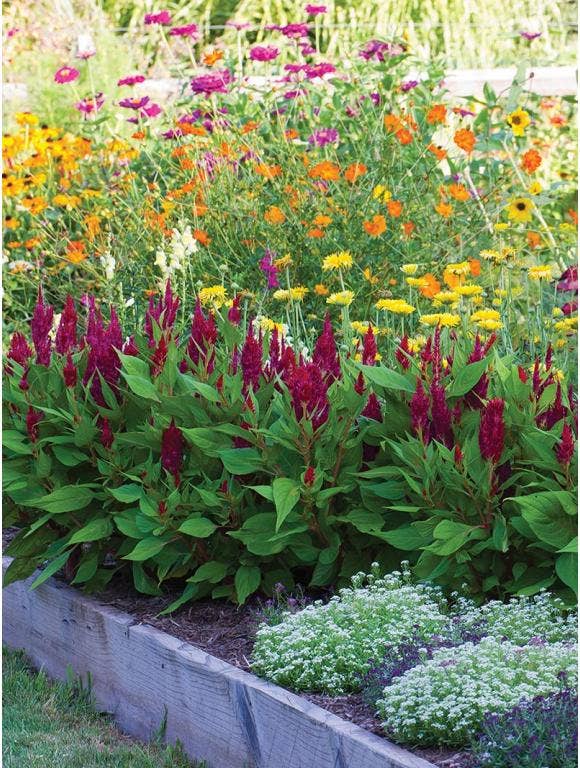
If you're keen to install a new garden space, drawing up a landscape plan is a good start. But don't forget that a border or gardening bed is a three-dimensional creation. Look at it as a series of layers in both space and time - from front to back, side to side, and season to season.
Which Types of Plants Should I Plant in My Gardening Bed?
 Besides choosing plants because you like them and they suit your environmental conditions, it's important to take into account certain key qualities:
Besides choosing plants because you like them and they suit your environmental conditions, it's important to take into account certain key qualities:
- Size
- Seasonal interest
- Texture
- Color
The prospect of composing all of this can be overwhelming as you stand in front of a big empty bed. But a few basic concepts will get you rolling.
Plant height and width are key to good spatial layering, especially from front to back of the bed. The general rule (just like taking a group photo) is short stuff in the front, medium stuff in the middle, and tall stuff in the back. That way everything is visible. If you have an island bed, the rule is tall plants in the center, then stepping down in height as you work out to the perimeter. (Note: Research each plant to know its mature measurements before assigning it a spot in the garden bed.)
But it's OK to loosen up on this regimented approach! It can make a garden more lively and interesting if some plants break the rules - a few tall plants in the middle, a few medium ones toward the front. And avoid straight lines. Instead weave together drifts and clusters of plants.
Arranging Layers in Your Gardening Bed
Make sure in each spatial layer you have a few "anchor" plants you know you can count on (usually shrubs or perennials with presence or "heft," with multi-season interest or evergreen foliage). Even something low growing, like 'Firewitch' dianthus, can serve as an anchor plant at the front of the border. Once you have these backbone plants figured out, then start filling in between them.
A well-balanced garden has plenty of plants strutting their stuff at any given time, but also quiet spaces to rest the eye. Let plants come in and out of flower as the growing season progresses. And purposefully leave some open spaces to allow room to add new things, rotate seasonal annuals, or tuck in some bulbs.

Flower Bed Ideas
Take note of bloom times.
Make sure plants for every season are represented throughout the bed. But for optimum impact, create "vignettes" by grouping plants together that share the same season. Just don't put ALL the spring bloomers at one end of the bed, summer bloomers at the other. And don't feel pressure to jam-pack the border so that everything is going at mach 10 for the entire growing season.
Consider color and texture.
Two other factors for achieving good layering are color and texture. Remember that blocks of color and texture bring greater impact to a bed than a jumble of plants in ones and twos. If a plant is naturally big, one might be enough; for smaller plants, use groups of three or more, depending on the size of the border.
Make sure you include a mix of textures - fine, medium and bold. And punctuate masses of similar textures with something different, like an ornamental grass amidst daisies and salvias. Keep in mind that small flowers and delicate textures are easier to appreciate up close, and coarse textures should be placed further back, though it depends on the plant (some big plants are fine textured and some small plants are coarse).
Colors are categorized as either cool (purple, blue, green) or hot (red, orange, yellow). Since cool colors "recede" and hot colors "advance," use this to your advantage as you layer. For example, cool colors at the back of the border can make it seem larger, hot colors at the back will draw it closer in.
Use patterns.
Give the flower bed cohesion by echoing colors and textures from front to back and from one end of the bed to the other. You can do this repeating the same plant or by using different plants with similar qualities.
The goals of layering are to give the garden energy as well as harmony, variety as well as cohesion.
Feeling inspired? Get your garden beds blooming with a mix of Burpee's best bedding flowers.


